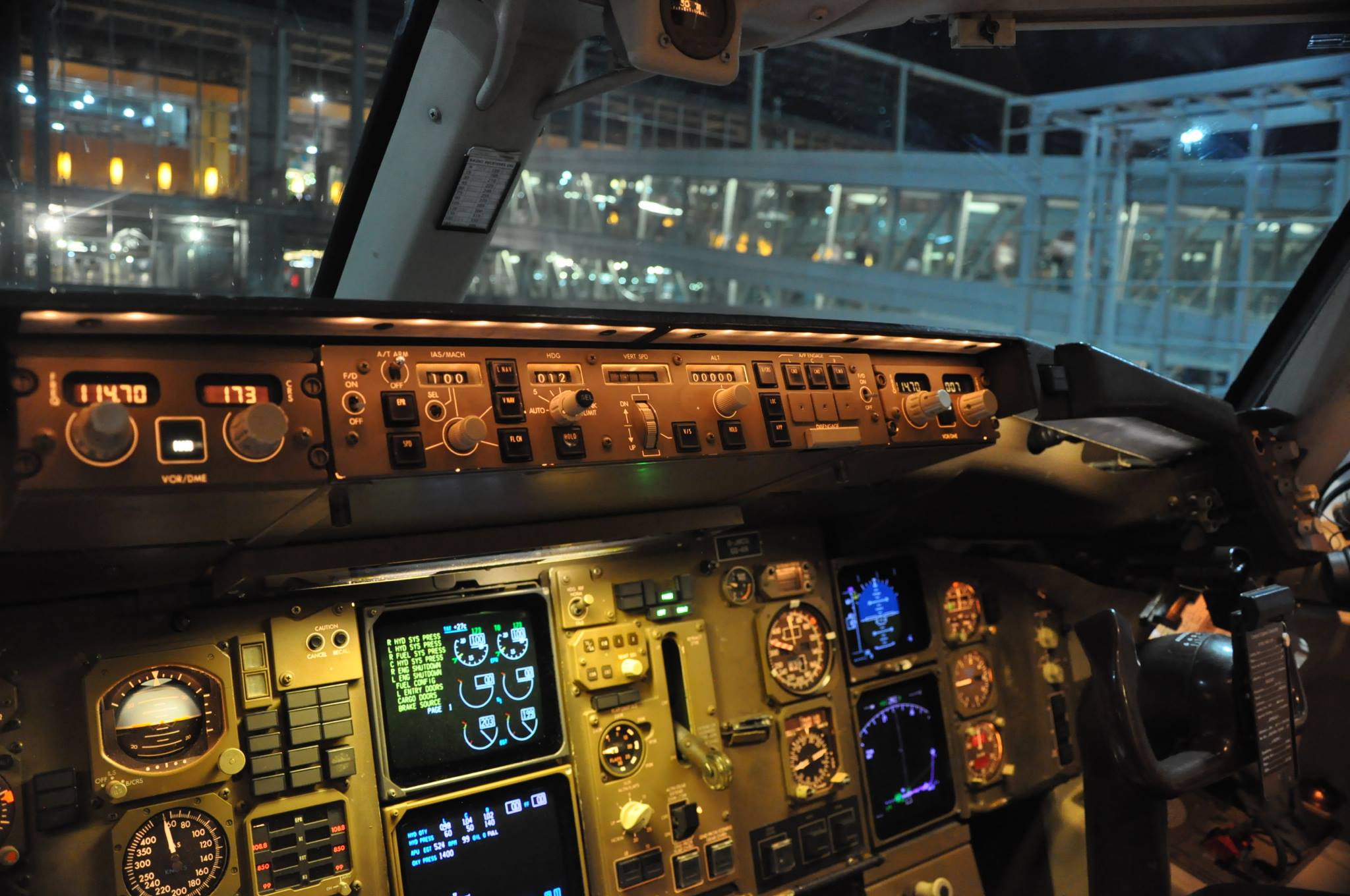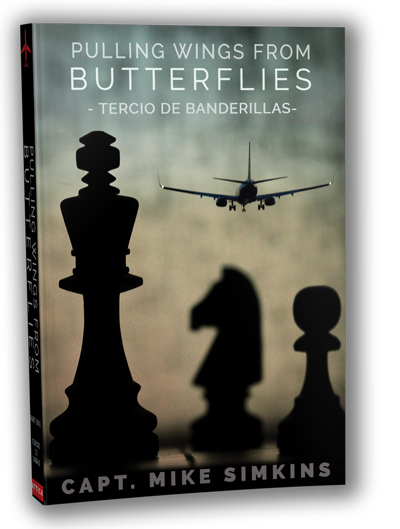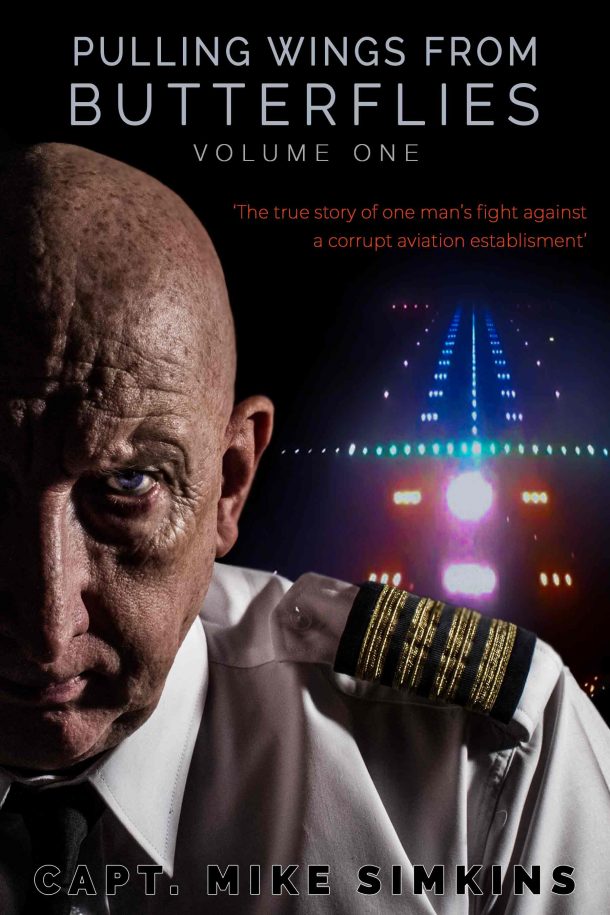on my flights into CDG that when entering French airspace, any French registered aircraft would receive and reply to any air traffic instructions in French. I had always been under the impression that air traffic control (ATC), no matter where in the world, would still give ATC instructions in English. The reason is simple. It enhances flight safety. As a pilot, it allows you to pick up subtle clues about what other aircraft are doing by listening to all the communication on any particular frequency. It helps aircrew to build a mental picture of the environment and traffic direction in your specific airspace. There is a phrase for it. “Spatial awareness.”
I had flown into and out of CDG several times from the Leeds base, and I had formed the opinion that the standard of air traffic control in the airspace around the eighth busiest airport in the world, left a lot to be desired. For example, we would receive lots of last-minute changes to arrival procedures that would significantly increase the workload. On a couple of occasions when thunderstorms were in the area, the controller would become so quickly overloaded they would simply not respond to requests to change headings to avoid the cells. At that point, you chose to fly through a thunderstorm and risk severe damage to the aircraft and probably passengers, or, you took it upon yourself to change heading without a clearance. I’m still here, so I leave it to you to consider what I did.
All these issues were further compounded by the fact that, as a large number of aircraft communicated in French, there was no way that it was possible to build up any relevant internal spatial awareness.
One particular evening I was rostered to fly into CDG, and all was going to plan until the late stages of the approach. The number of ATC transmissions was high, as it was the peak time. Aircraft from different departure points throughout the world were converging on the French capital’s main airport. As usual, there was a high amount of ATC transmissions being conducted in French. We had been given a heading by the CDG radar controller to intercept the final approach to the easterly runway. We began to slow down to configure the aircraft to make the landing. Once established on the inbound path to the runway, we were instructed to contact CDG tower for landing clearance. Again the amount of chatter on the frequency was so high that we had difficulty in actually informing the Tower that we were on the final approach. Finally, there was silence, and we were able to transmit,
‘British Midland 497 localiser established.’
The Tower replied ‘Midland 497 cleared to land’ along with, as is standard, the wind speed at that moment. However, there was one small problem, well rather a significant, big, metal problem. Still on the runway was a Boeing 747. Fortunately, the visibility was excellent, and we could see the aircraft clearly, and it’s very slow progress to the runway turnoff. We continued down the ILS in the hope that the other aircraft would clear the runway in time. The ILS consists of what in simple terms are two radio beams that receivers pick up in the aeroplane that will give both glide slope and lateral displacement information to the flight crew. That is how a modern airliner can land even in low cloud or low visibility.
It became evident that the preceding aircraft would not clear the runway in time, and I decided to commence a missed approach as this would be the safest option. This manoeuvre happens reasonably regularly and can be caused by bad weather, maybe strong winds, turbulence at a low altitude, more substantial than forecast tailwinds or, as on this occasion, where the flight crew decided it was the safest course of action. It’s a flight manoeuvre that is practised repeatedly in the simulator. Before every approach commences, the pilots brief on what to do in the event of a go-around. Despite the sensational headlines that appear in newspapers, a go-around is a non-event. However, the reason for the go-around might be either mundane, as above, or something far more serious.
On this particular occasion, we flew the missed approach procedure, with RT (radio transmission) to the tower mixed with expletives in the cockpit as to why the controller had cleared us to land when the runway was not clear.
We flew the proscribed headings and altitudes as per the published procedure and then, again, received headings and altitudes to guide us back on to the final approach and ILS.
The constant RT chatter, which was again liberally sprinkled with French, made it impossible to inform CDG tower that once again, we were at a late stage of the approach. Finally, we managed to get a word in edgeways, and we were given the clearance to land. This time it was without several tonnes of metal still occupying the runway. The rest of the flight and the flight back to Leeds continued without further incident.
There, however, was a problem, and it was a problem that needed to be addressed. Anybody with any sense could see it; even people with no flying experience could see it.
As a pilot, you must highlight any weakness in procedure or equipment, or indeed yourself, if for no other reason than self-preservation. Having discussed what had happened with the first officer, we decided to complete the form designed to highlight any such weakness. The form is initially submitted to the safety office within an airline. If the safety office determines that the problem highlighted is a recurring problem, or is of such seriousness that it requires immediate action be taken, then the form is sent directly to the controlling authority which, in the UK is the CAA.
I completed the required form and indicated that, in my assessment, there were two reasons for the go-around.
Firstly, the indisputable fact was that there was another aircraft on the runway when we were cleared to land. In my opinion, this would have made any attempt to land unsafe. Secondly, the number of communications in French at CDG, mixed with a large amount of RT (Radio Transmission), chatter made it virtually impossible to build sufficiently robust situational awareness at an airfield that has been established as being one of the busiest in the world.
We placed the completed form in the post-flight envelope and that, I thought, was that. What is important to realise is that the details contained in this form are not designed for public consumption; it is an internal means of dialogue between the aircrew, their respective company and, in this case, the CAA.
The Leeds base was extremely sociable, and there would be regular evenings out with the pilots, cabin crew and wives/husbands etc. It was at one particular base curry night that a colleague asked me, “Hey did you see this month’s PILOT magazine? You’re famous!”.
The very magazine I flicked through years previously now described what had happened at CDG. I pointed out to the bearer of the news that I had never actually sent any articles to the publication. My colleague continued to inform me that the story related in detail, not only to the go-around itself, but also the reasons behind the go-around. I thought this was a bizarre occurrence. The only information of the incident was contained in the confidential form I had completed. So, how exactly did PILOT magazine get hold of the story?
The following morning I visited the local newsagents and seeing there was no-one around, I reached for the PILOT magazine on the shelf. Eventually, I found the page. It was virtually, word for word what I had written in the confidential correspondence to my company’s safety department. The details had, however, been de-identified. But there, in black and white, were the exact details of what had happened. Someone somewhere had leaked the information.
Within a few short weeks, the article appeared in CHIRPS. The Confidential Human Factors Incident Reporting Programme is a publication that provides an independent and confidential reporting system for all individuals employed within the aviation industry. Again, this publication is reliant upon individuals supplying reports directly to them. The information is de-identified and published if the board consider that the incident needs highlighting to the broader aviation community. You can, therefore, imagine my surprise when through my letterbox came the latest edition of CHIRP with the headline “Common Aeronautical Language C’est la vie!” Containing my report in full. As with PILOT magazine, I hadn’t sent CHIRPS the report.
From Issue 48 From October 1998, here is exactly what appears.
“The following text is taken from the CAA (SRG) Occurrence List (ATC) 1st Jun 98 – 30th June 98 and merits particular attention”.
OCC NUM 980151QJ
“Pilot states that during approach, non–standard R/T (French) was used and that his aircraft was on very short finals without having a clearance to land. A previous a/c had landed on the r/w and called clear, but was not. Go around flown. On second approach, the crew again found it difficult to call “LOC established”, due to continuous radio transmissions in French.
CAA CLOSURE: The French Authority’s report indicates that the reporters a/c failed to follow a reduce speed instruction and this, combined with the previous a/c’s slow clearance from the r/w led to ATC instructing a missed approach.”
The final paragraph is the killer.
Concerning the use of French, the report stated, “English and French are used jointly at Paris Charles de Gaulle in conformity to the
MINISTERIAL ORDER of 7th SEPTEMBER 1984 relating to radiotelephony procedures for the use of general air traffic. It states in particular (in paragraph 2.4) that French must, except in special case, be used between French flying personnel and French ground stations.”
There were two problems with that French reply. The first was, having discussed the matter with the first officer, neither of us remembers being given an instruction to slow down and secondly, we had decided to go around, not French ATC. More tellingly and maybe an insight into the shenanigans within the industry, the details of the flight such as flight number, date, and airline information were not passed to the French authorities. It is a confidential process with the information being “de-identified”. Therefore, how would they know if a speed reduction request was or was not given if they have no idea when this situation occurred, our call-sign, or the time or even which airport it happened? It wouldn’t be the French authorities trying to cover up, would it?
Well, let’s see.
A few days prior to the CHIRP publication, I had been involved in another situation at CDG that once again was directly attributed to ATC using French at this major airport. This time the incident could have been disastrous.
On the day in question, the visibility was poor, at only 2000 meters, and as usual, there was a mix of French and English being spoken. These conditions are exactly why one language should be used to help pilots maintain their spatial awareness.
A Boeing 757 was lined up on the runway and cleared to take off. We were ‘cleared to line up behind the departing 757’ who was only now spooling up his engines. Again there were several transmissions in French. Immediately the wheels of the 757 left the ground we were cleared for ‘immediate take-off’.
Our reply was clear and concise, ‘negative we require three minutes for wake separation.’ This was non-negotiable. It’s internationally mandated, and the French ATC knew this. Once more, there were ATC transmissions made in French, and even though we could not understand what was said, the stress in the controller’s voice was tangible.
‘I say again you are cleared IMMEDIATE take off’ barked ATC.
I again refused the clearance.
‘You must take off IMMEDIATELY’.
‘NEGATIVE’ my first officer replied.
If a large aircraft takes off in front of a smaller plane, the ATC unit must give at least two minutes separation between the larger aircraft and the smaller one. The period increases to three minutes if the smaller aircraft is departing from a different position than the larger aircraft. Wake vortex turbulence can best be described as the turbulent airflow that forms behind an aeroplane as it passes through the air. It begins from the moment the proceeding aircraft rotates skywards.
The reason the tower controller wanted us to risk taking off and ignore the years of study into aircraft accidents caused by wake turbulence was this. The transmissions on the ATC frequency were actually from an Air France aircraft that was on final approach to the runway we were refusing to take off from. The controller was caught out. He should have waited for the Air France aircraft to land first, before lining us up on the runway behind the 757. He then compounded his mistake by asking us to risk a take-off into a known danger. What he should have done, once he realised his mistake, as we were sitting on the runway, was to instruct the Air France aircraft to go around. Sensing what was developing, I had started to move my aircraft forward.
‘You vacate the runway immediately.’
This instruction I could follow, and we taxied off the runway. Moments later, the Air France aircraft landed. Once I was sure that he had landed and before anyone else had been cleared to take off, I informed the controller, over the air, that due to his incompetence, he had caused a potentially dangerous situation to which I would be reporting fully to the relevant authorities.
I filed a report on the occurrence. However, when I read the CHIRP publication and how the French authorities responded to the first incident, I decided to also write directly to CHIRP. Not only did I answer the reply given by the French authorities to the initial story, I also informed them about the latest incident.
I also made a chilling prophecy.
Again this is an exact copy of what appeared in CHIRP. Note the date:
A Common Aeronautical Language (FB48) Jan 1999.
“I was the captain in this incident. The French ATC would appear, according to the French authorities, to be blameless in this incident at Charles De Gaulle … Well, let’s see: We DID NOT fail to follow a reduced speed instruction; at least one given in English. Maybe one was given in French? It has happened on more than one occasion when things get fraught at CDG – the local controllers revert to native language. A further incident may illustrate the problem and, I am sad to say, maybe show how a major incident is waiting to happen if the French ATC continue to be constrained by Ministerial Order No 7.
The visibility at the time was 2,000m and low cloud base. As usual at CDG, chatter was heard in French and English. A B757 (UK airline) was cleared for take-off ahead of us, we were immediately given clearance to line-up, followed by immediate take-off clearance. The first officer informed Tower that we needed the standard separation for wake vortex. Again more chatter was heard in French. We were then requested to vacate the runway as an Air France B737 was approaching on very short finals. This raises the point that had the transmission been made in English, as a crew, we would have been able to build up the ‘mental picture’ of the situation. In this instance, knowing we would have to wait on the runway, we would have declined the clearance to line-up knowing the B737 aircraft was on short finals. As it is, the simple fact that French is used in RTF transmissions has cost our company fuel for go-round in the first incident and more taxi fuel and an extra 20-minute delay in the second. More importantly, the use of two languages has caused flight safety to be eroded. Is this a case of nationalism over safety?”
CHIRPS Reply
“We have received other similar comments on this matter and will seek the support of CAA to once again represent these concerns in the appropriate forum. It is important to report formally every occurrence of this type that prejudices safety.”
There was obviously a problem at CDG, and I decided to do whatever I could in an attempt to get it resolved.
As the base captain at Leeds, I had asked all my crew flying into CDG that every time French was spoken on the RT to put in a report as it was a flight safety issue. We had two flights a day, so within a couple of weeks, there were over twenty flight reports all sent to head office, all saying pretty much the same thing. A few days later came the call. It was my fleet manager enquiring why he had received such a large number of reports from my base. I told him about the two incidents I had been involved in and that it was only a matter of time before there was a disaster. I also told him that when there was an accident, if asked about it, I would have to say that my base had informed the company over twenty times that this was an accident waiting to happen, and it was one that could be easily rectified. The fleet manager then told me he would forward all the details to the CAA.
A few weeks later, I received a phone call from a senior CAA official. Again, like my fleet manager, he was interested why I had asked my colleagues to go to the trouble of filling in a report every time French was used at CDG. I gave him the exact same reason I had given my fleet manager.
It took less than a year for this prediction to manifest itself with tragic consequences.
You may have never heard about the accident. It is unsurprising that the authorities, naturally, wished to keep the lid on this news story due to the embarrassment to the CAA, the French authorities, and not least to French ATC and its government.
The report was published in Flight International, a weekly publication for professional pilots. The headline was “Language Confusion at CDG Caused Collision Claims BEA.”
The magazine ran a report on the accident by the Bureau Enquêtes-Accidents (BEA). BEA is the French authority responsible for safety investigations into accidents or incidents in civil aviation. The weakness of the BEA, is, as it states on its website homepage “The identification of causes does not imply the assignment of fault or the determination of administrative, civil or criminal liability.” Some might, therefore, conclude it is, in fact, a toothless organisation.
It was dark when an Air Liberté MD 83, began to taxi from terminal 1 to the holding point of runway 27. The aircraft stopped on the way to the runway to deal with a technical problem. A British Shorts 330, was cleared to taxi from the cargo ramp to runway 27. At this point, both aircraft were under the guidance of a ground controller.
The British aircraft was cleared to an intermediate take-off point on runway 27. Shortly afterwards, the Air Liberté aircraft resumed taxiing for a full length departure.
The Air Liberté was then told to line-up and wait on the runway after a landing B737, but he was told in French.
As the B737 vacated the runway, having passed in front of the Shorts 330, the Air Liberté was then cleared for take-off. Again in French.
Five seconds later, at the intersection, the British aircraft was ‘cleared to line up on runway 27 and wait’ but in English. The British aircraft taxied forward and entered the runway. Shortly before impact, the Shorts 330 captain noticed the Air Liberté beacon lights and braked. About the same time, the Air Liberté crew noticed the Shorts 330 on the edge of the runway. The aircraft had by then passed V1, a speed past which the plane is committed to getting airborne.
The left wing of the Air Liberté collided with the right propeller and cut through the Shorts 330 cockpit, decapitating the first officer of the British aircraft.
Due to the French denial that speaking two languages on ATC is inherently dangerous, there was now a man dead. The only comfort about that evening was that only one person died, not that this will be of any comfort to the unfortunate pilot’s family. It could very easily have been six or seven hundred deaths if it had been two wide-bodied jets colliding instead of a small mail aircraft.
The whole situation is a little like knowing that there is a bomb that has been placed at Charles De Gaul Airport. Not only do we know that there is a bomb, but we know exactly where the bomb has been placed. The only things we don’t know is, how big the bomb is, and when it will go off. That, however, is immaterial because if you move or defuse the bomb before it explodes, it will not kill anyone. The French and the European air traffic agencies don’t want to move or defuse this particular bomb. The bomb is still ticking at CDG airport. As in any crash, there inevitably will be more than one cause, as was the case in this one. However, the findings, by the BEA, the French authority responsible for safety investigations into accidents or incidents make for fascinating reading.
The agency responsible for all air traffic movements throughout Europe is Euro Control.
Euro Control has a publication, dedicated to the role of ATC in air traffic safety; its name is “HindSight” with the subheading “Putting Safety First In Air Traffic Control.”
It was in HindSight that the BEA investigation was reported. They gave a significant part of their January 2005 edition over to the Shorts 330 crash.
So what did “HindSight” have to say about the crash? In its “analysis section” the first thing it states is “All the exchanges between ATC and the French aircraft were conducted in French while all communication with the British aircraft were in English.” However, when it came to the “probable cause” of the accident, it was nowhere to be seen. No link made. Bear in mind this information was taken from the official French BEA findings.
The “probable causes” given were;
a) The Tower controller’s erroneous perception of the position of the aircraft.
b) The inadequacy of the systematic verification procedures at CDG, which made it impossible for the errors to be corrected.
c) The Shorts crew not dispelling any doubts they had as to the position of the other aircraft before entering the runway.
If English had been used, it is unlikely the last two errors would have occurred. It was only towards the end of the article, within the contributory factors, was it mentioned that the use of two languages meant the Shorts crew were not conscious that the MD83 was going to take off.
In the “recommendations” section it suggested the French authorities study the suitability and methods of implementation for the use of the English language for air traffic control at Paris Charles de Gaulle aerodrome. They also considered the extension of this measure to other aerodromes with significant international traffic. In making this recommendation, it was stressed that the investigation did not aim to evaluate the advantages and disadvantages of the systematic use of a single language.
The French said ‘Non’ to that recommendation.
French is still used at CDG. The bomb is still sitting there ticking, tick, tock.
content






